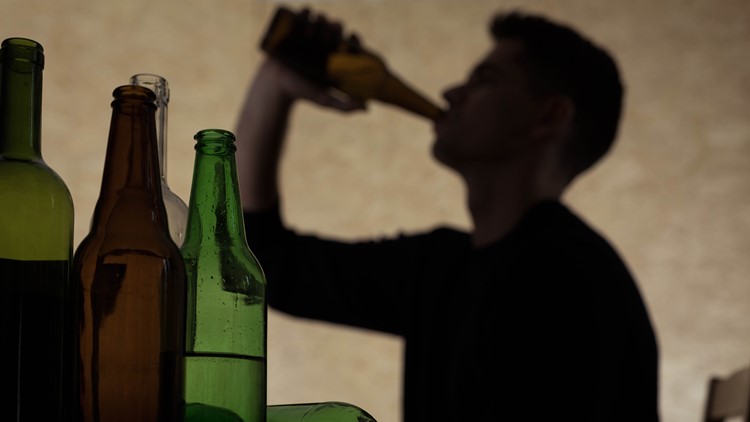When health officials wanted to reduce deaths from tobacco, they spread messages about the proven cancer risks, pushed to ban smoking in public places and worked to raise taxes on cigarettes.
Alcohol, which causes 88,000 deaths a year in the United States, is a similarly grave public health concern. But the way forward is less clear.
What worked with smoking may not work with drinking, which still enjoys broad social acceptance. Nearly all the potential solutions are hitting considerable roadblocks.
Studies show deaths linked to alcohol are up between 35 and 50 percent since 2000, but it's never been cheaper to imbibe. The Trump Administration's tax cut last year included an 18 percent break for in the federal tax on beer, wine and liquor.
States with more stringent alcohol control policies had lower rates of binge drinking, according to a 2014 analysis of state laws and taxes.
Binge drinking accounts for about half of all deaths attributable to alcohol, two thirds of years of life lost, and three quarters of economic costs.
Legislative approaches face many of the same challenges as tobacco: Legislatures support their home state alcohol industries the way they resist policy threats to local tobacco interests.
Less than 60 percent of the U.S. adult population drinks alcohol. But if influencing legislators is the goal, David Jernigan says, that population includes the right people.
Jernigan, a professor at Boston University's school of public health who has specialized in alcohol research for 30 years, says he doesn't drink because "I like to keep my wits about me."
Nonetheless, he says, "it's just so socially acceptable, especially among the people who write the laws. It's the drug of choice and incredibly normalized for upper income people in the USA."
Among approaches that have shown results:
Raising taxes: Alcohol is subjected to excise taxes, which are based on the volume sold, and sales taxes, which are based on the retail price. According to the Centers for Disease Control and Prevention, a 10 percent increase in taxes leads to a 5 to 8 percent decline in drinking.
For states, that's good news and bad news. While reductions in drinking might save states money on Medicaid for low income and disabled residents, fewer sales reduces state revenue.
Richard Berman is CEO of the public affairs firm Berman & Co., which has represented the alcohol, tobacco and restaurant industries.
He says higher taxes can prompt people to trade down to less expensive brands, if they live near a state line, to go to a neighboring state with lower taxes.
Jernigan disagrees.
"Alcohol taxes are a win, win, win," he says. "States get more money and people drink somewhat less."
Restricting sales. State and local governments often cap the number of liquor stores allowed in an area and the days and hours they can sell.
The Community Preventive Services Task Force, part of the U.S. Department of Health and Human Services, recommends that states resist privatizing alcohol sales, which is linked to a median 44 percent increase in sales which leads to less drinking.
States that don't cap or control liquor sales have 50 percent more liquor stores per capita than those that do, Marathon Strategies reported in 2014.
In states that had caps based on population, there was one store for every 10,204 people. In states that didn't have caps, there was one store for every 5,737 residents.
Improving access to treatment. Only about one in 10 people who need substance use disorder treatment receive the care they need, according to a the Substance Abuse and Mental Health Services Administration reported in 2017.
Psychologist Ben Miller, chief strategy officer at the nonprofit Well Being Trust, says people with addiction need to be identified far earlier and linked to treatment "at that first stop," including emergency rooms and jails.
Integrating mental health workers in primary care doctors' offices, he says, could "help countless lives, save millions of dollars, and begin to change the culture of care to be more comprehensive."
Bolstering coping skills. About 15 percent of deaths attributed to alcohol are suicides. Addressing addiction would also help address feelings of hopelessness.
The Well Being Trust has called for a "National Resilience Strategy."
The nonprofit says investing in early childhood policies and programs would have the greatest impact.
In its Pain in the Nation report this year, the Well Being Trust called for better early identification of trauma and mental health problems in school-aged children to help them deal with stress and trauma before they turn to alcohol and drugs as crutches.
"The most important substance we should be looking at is alcohol, because it leads to some many things, including physical abuse and rape, that shouldn't happen," Jernigan says. "We need to stop accepting that there isn't anything we can do about it."
If you are interested in connecting with people online who have overcome or are currently struggling with health problems mentioned in this story, join USA TODAY’s ‘I Survived It’ Facebook support group.



